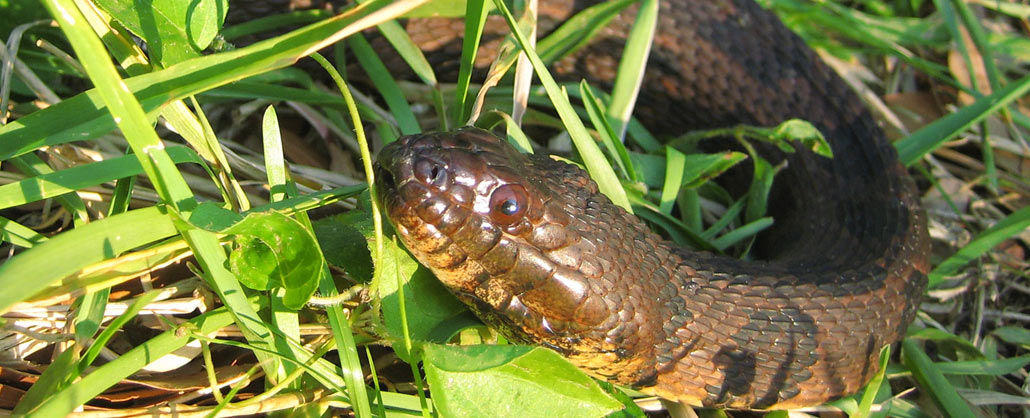- USA Wildlife Removal Education Guide - Water Moccasins: Poisonous Predators
Water Moccasins: Poisonous Predators

The snakes’ range extends broadly across the southeastern United States as far west as Texas and up the eastern coast into Virginia. Solitary by nature other than at mating time, they are most comfortable in water-oriented habitat -- in or near creeks, streams, marshes, swamps, and on the shores of ponds and lakes. While these are the favored environments, the snakes are also found away from water in thickets, forested areas, dunes and beaches, and prairies. They are known to swim to off-shore islands as well.
Water moccasins are pit vipers, with heat-sensing pits between their eyes and their nostrils that aid them in in hunting. They are relatively large, thick-bodied snakes, occasionally nearing six feet in length and weighing up to 10 pounds. The snakes are most recognizable by their broad triangular head, blunt snout and tan, brown or reddish brown color with dark crossbands. As the snakes mature, the body color turns darker to the point that the crossbands are almost indistinguishable.
Moccasins are opportunistic ambush hunters, with a diet that ranges from insects and snails, to lizards and amphibians, small alligators, other snakes, water birds, rodents and fish, which they herd into shallows and seize. They also feed on carrion.
Female moccasins can reproduce as early as three years of age, giving birth to as many as 20 young but with litters of six- to eight every two- to three years. Mating occurs during the warmer spring months, with the males competing for the mating females to the point of physical combat. The young usually are born in late summer after incubating inside the mother for three- to four months. Growth is rapid and within two weeks, the babies are about 10 inches long, they have already undergone their first shedding and they are able to hunt.
Litters can also be produced through parthenogenesis – born without the eggs actually being fertilized.
Water moccasins are quite long-lived, with an average life span of about 18 years in the wild, with one living in captivity for more than 24 years.
If you need help, we service the entire USA! Click here for a wildlife removal specialist in your town!
Go back to the main Snake Removal page for more information about Water Moccasins: Poisonous Predators.

